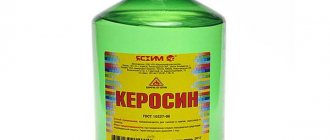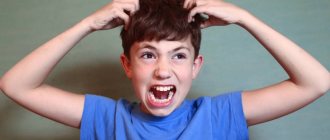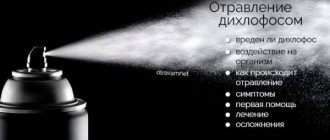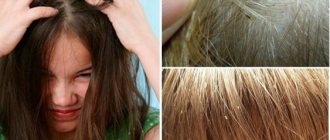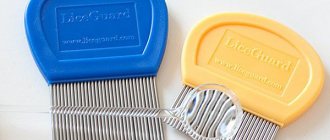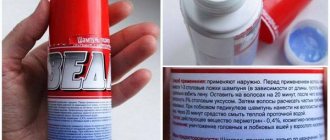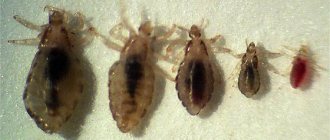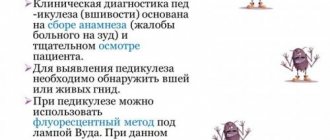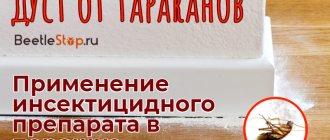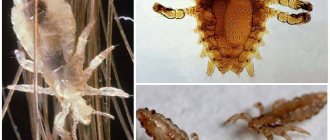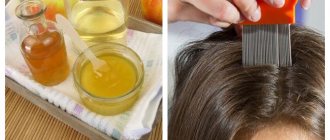Why do you need dust?
Dust is a technical preparation based on a chemical compound called 4,4-dichlorodiphenyltrichloroethane (DDT). This is a powerful contact poison that affects the nervous system of insects. For the discovery of the insecticidal properties of dust, the chemist P. Müller was awarded the Nobel Prize in Medicine in 1948. Since the middle of the 20th century, the substance has been used to destroy pests of agricultural plants. Fields were pollinated with a solution of dichlorodiphenyltrichloroethane to preserve the crop from aphids and Colorado potato beetles.
In the late 60s, scientists discovered the cumulative toxic effect of DDT in humans, farm animals and birds. In a number of countries, the toxic chemical was officially banned, and the large-scale practice of baiting insects using dust is a thing of the past forever. Today the substance is used to combat bedbugs, cockroaches, and flies.
Rules for dealing with bedbugs
Professionals are convinced that it is impossible to find the most effective (100% effective) means of combating insects such as bedbugs. In some cases, it is much easier to burn some things than to process mattresses and wardrobe items. Does dust help against bedbugs? Representatives of sanitary and hygienic services are convinced that in many situations it is really effective, but sometimes such treatment of premises is not enough to completely destroy parasites. If there is no result from using standard means of combating such parasites, try potent insecticidal chemical preparations made on the basis of karbofos.
Dust-based products
In its pure form, dust is a white, finely crystalline powder that does not have a distinct taste. The chemical industry produces a number of products in which the amount of DDT varies between 1-10%. The remaining components are represented by materials such as chalk, white clay, dried solid gel (silica gel), talc, etc. The most popular product containing DDT is dust soap . It is based on laundry soap with a traditional composition (lye, phenol derivatives, vegetable and animal fats). Dust is added in an amount of 5%.
For a long time, dust soap was widely used to treat head lice as the most effective and cheapest remedy. In addition, before the advent of modern veterinary drugs, it was popular for treating cats and dogs against fleas. Today, dust detergent can only be found in online stores. It is not sold in pharmacies.
How to use this product to control parasites?
Now let's talk about how dust is used. Instructions for use:
- You can determine the places of movement and habitat of bedbugs by the black dots, as well as by the skins of their larvae. In all identified areas where pests accumulate, we recommend applying a thin layer of dust, not forgetting the inside of furniture, rugs, baseboards, cladding, ventilation boxes, door jambs, heating, sewer and water supply systems. In the process of “treating” furniture, do not forget to treat all internal parts with powder; in addition, you need to saturate the furniture upholstery and folds of covers with it.
- To comply with safety rules, use protective gloves and overalls, seal and put away food, remove animals and people from the premises, open windows so that the smell does not cause poisoning.
- Once you have finished cleaning the rooms, wash your hands and face with soap.
- When cleaning the premises, also use protective clothing and gloves. Use a soap and soda solution.
- Those surfaces that have been treated with dust can be cleaned after three to six hours; for this you can use a vacuum cleaner. The powder placed in small holes and baseboards is removed after two to three months.
- When disinsection of upholstered furniture, it is better to use aerosols that contain substances with similar properties.
How dust works against lice
Using dust soap to combat human parasites is a rather aggressive method. However, DDT works so effectively that people are in no hurry to abandon it. The action of the substance is based on the active destruction of the protective cover of adult lice and the nit capsule. This means that simple contact with a pesticide is enough for insects to die. The proven effectiveness of dust soap against pediculosis is 100%. With one procedure you can completely get rid of ectoparasites.
Dust soap is not a cosmetic product. This is a product with a strong unpleasant odor, consisting of surfactants and dichlorodiphenyltrichloroethane. Due to the high toxicity of the substance, careless use can cause harm to health
Contraindications
Since dust is considered a highly toxic substance, its use during pregnancy or breastfeeding is not allowed. People with poor health and chronic diseases are also better off choosing a less toxic drug.
For asthmatics, the use of the product is strictly contraindicated. The strong smell will trigger an instant suffocation attack. Dust soap should not be used to eliminate head lice in children or adolescents.
The drug is also not suitable for people suffering from allergic reactions or dermatitis of various etiologies. Before you start processing your hair, you need to make sure that there are no open wounds on the skin.
Absorption of poison into the blood is fraught with poisoning. The lethal dose of dichlorodiphenyltrichloromethylmethane is 3 g per kilogram of weight. Symptoms of intoxication may occur at much lower concentrations.
Guide to using dust soap against lice
It is advisable to remove lice outdoors due to the characteristic odor of the product. If this is not possible, after treatment you need to ventilate the room well. To carry out the procedure you will need:
- • a basin with warm water;
- • a piece of soap;
- • cling film (plastic bag or rubber cap);
- • towel.
To mitigate the risks of side effects, it is recommended to have an assistant treat your head.
Procedure steps:
- • wet your head;
- • lather generously, gently massaging the skin;
- • distribute soap foam along the entire length of the hair;
- • wrap your head with film (put on a cap or bag)
- • securely fix the “cap” with a towel;
- • stand for 30-35 minutes;
- • rinse the soap thoroughly under running water;
- • wash your hair with shampoo and rinse with conditioner;
- • dry your hair (without using a hair dryer);
Finally, you should comb out the dead parasites with a fine-toothed comb.
Characteristics
A piece of dust soap is a simple analogue of laundry soap, to which a certain amount of insecticide has been added. Some people confuse tar and dust soap. The second has no cosmetic properties; it can only be used to destroy domestic parasites. The use of tar soap helps improve the condition of the hair and scalp, but it will not help get rid of lice.
Previously, dust was used to exterminate various insects: pests and parasites. Even if there was no urgent need for this product, it was poured into all the cracks, behind sofas, under baseboards. Nowadays dust is rarely used; more often special aerosols are purchased instead. Scientists have proven the negative impact of this insecticide on the human nervous system, so it is practically not used to treat city apartments against parasites. For those people who are allergic to various chemicals, it is not advisable to use dust to kill bedbugs and fleas. Allergy sufferers may be advised to purchase special powder preparations that do not cause side effects.
However, it is far from a fact that modern analogues of the product in question do not contain even more substances hazardous to human health. Be sure to study the composition of the aerosol, as well as how to use it and the basic precautions that must be strictly followed to combat parasites.
Why is dust dangerous?
Dichlorodiphenyltrichloroethane is toxic not only to insects, but also to humans. The difference lies in the dosage of the drug and the method of exposure. In sensitive people, mild poisoning can be caused by the strong smell of dust. More serious health problems arise if the toxic chemical enters the body. Dust is not only resistant to water, ultraviolet radiation and high temperatures. It is not broken down in internal organs under the action of enzymes and other bioactive substances. And therefore it is not excreted by the filtration organs (liver, intestines, kidneys). Moderate intoxication is caused by 6-10 mg of DDT (per kg of weight). For severe poisoning, 16 to 286 mg/kg is required. The lethal dose is considered to be 300 mg/kg. It turns out that, on average, half a kilogram of dust poses a danger to humans. Of course, such an amount of poison cannot enter the body at once. However, if a substance is supplied regularly, even in small quantities, it settles (accumulates) in the tissues. Over time, this becomes the cause of chronic intoxication, which threatens the development of dysfunction:
- • central nervous system;
- • respiratory and visual organs;
- • gastrointestinal tract and hepatobiliary system.
Permanent poisoning of the body leads to rapid aging and activation of cancer cells
Precautionary measures
Since dust soap contains a toxic substance, it is necessary to work with it in a well-ventilated area. Access to fresh air must be provided for several hours so that the “aroma” completely disappears. You should not process it yourself. To ensure that if signs of poison occur, first aid is provided immediately, use the help of third parties.
A person working with dust soap needs to use protective equipment: rubber gloves, a respirator. It is also better to cover your eyes with special glasses. Soap foam that gets on exposed areas of the body is washed off with a stream of water as quickly as possible.
The respiratory tract of the person being treated also needs to be protected. To prevent accidental contact of soap with the cornea, the eyes should be closed tightly. The neck and shoulders are protected with fabric that absorbs liquid well.
Important point! A single external use of the product is not dangerous for people and animals if the rules are strictly followed.
If disinsection is carried out on an animal, care must be taken to ensure that the substance does not enter the pet’s esophagus. For this, a protective collar is used that will prevent the dog or cat from licking the fur treated with poison. Veterinarians warn that it is necessary to use the product to treat pets once, taking all precautions. The insecticide is contraindicated for animals that are not yet 10 months old. The drug is not used for tick bites, in which case there is an open wound and the poison will enter the blood. And it will be difficult to remove a dead parasite.
Effective removal of lice and nits
Pharmacies offer special pediculide products that are safe for humans and effective against parasites. An example of such products is the Paranit line.
The product is based on mineral oil (and dimethicone (a hydrophobic polymer). Paranit is available in several forms, which allows you to choose the most suitable option. Paranit shampoo (200 ml);
- • Spray “Paranit” (100 ml);
- • “Paranit Sensitive” (150 ml);
- • Lotion “Paranite” (100 ml).
Paranit has undergone clinical studies, during which high effectiveness against lice and their eggs was confirmed.
The product does not contain insecticides. The active ingredients of “Paranite” cause suffocation and dehydration in adult insects, and also clog the nit capsules, preventing the flow of oxygen. Lice and nits die after the first contact with the active substances of the product.
A special product, the “Paranite Sensitive” series, has been developed for children over one year old. Key advantages of the “Paranita” product line: ease of use, clinically proven effectiveness, non-addiction to the components, non-toxic for children and does not harm hair. A week later, if necessary, re-treatment is carried out.
Efficiency of application
Dust soap against lice has proven itself to be fast-acting and unparalleled in its power of action on various parasites. Most often, one procedure is enough to remove lice.
Sometimes, if a strand of hair is missed or the dust foam is washed off early, several nits survive after the manipulation. In this case, it is recommended to re-treat the head with another drug after 5-7 days.
This is due to the fact that dust is not allowed to be used more than once. It is advisable to use it only in case of emergency.
Methods of infection of head lice
Head lice infection
Children are more often susceptible to this disease: you can catch lice
, it is possible to become infected with them too
or summer camp. And this fact can only be explained by childish carelessness. Therefore, the question of how one can become infected with lice worries every parent who cares about the health of their child.
The head louse (Pediculus humanus capitis) is a small grayish-white insect whose body size does not exceed 3-4 mm. Parasites cannot jump, nor can they fly. But thanks to three pairs of tenacious limbs, pests are able to quickly move through hair.
- It is possible to become infected with lice from another person by touching hair: the parasites, with the help of their hook-shaped claws located at the ends of their paws, are able to very quickly move from the head of the carrier to the head of a new victim.
- The likelihood of getting lice increases if you use other people's hygiene and hair care items (combs, elastic bands, hairpins, etc.), as well as a pillow and headphones.
- Trying on other people's hats is another opportunity to acquire head lice. After all, not only adults pose a danger; nits are also contagious.
Humanity knows several ways to become infected with lice.
- Touching your hair to the patient's head. This transmission route is the main one. Adults can become infected from a child. In order for an insect to move to another place of residence, you need to stay in close contact for at least 10 minutes. In most cases, transmission of parasites occurs between loved ones, lovers, and friends. When lying on a bed, sofa, prolonged hugs, kisses.
- Infection with lice through things - a hat, comb, accessories, towel. In this way, people more often become infected with pediculosis in kindergartens and school groups. There is an exchange of things between girlfriends and classmates. You can catch lice through someone else's towel.
- Adults in most cases become infected through bedding. A lice can fall on a pillow and exist for more than 1 day without food. An infectious bed causes the development of pediculosis.
- The infection process occurs most rarely through water in swimming pools and closed reservoirs. Provided that there is no rubber cap on your head. The insect falls from the hair into the water. Capable of swimming for about 2 days. If at this time she has access to human hair, the parasite will definitely take advantage of the opportunity.
To avoid getting infected with lice, you must adhere to the basic rules - use only your own things, go to bed with new, washed items, and keep your distance. Periodically check your head for insects and use products to prevent head lice.
